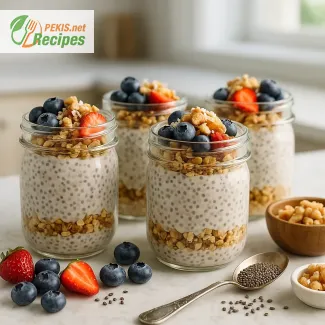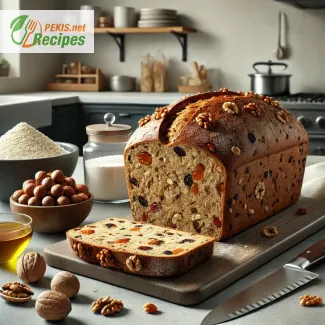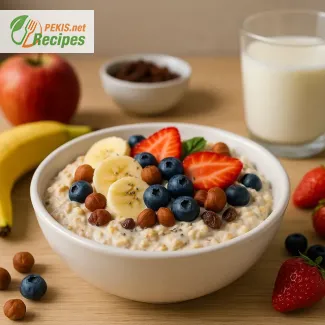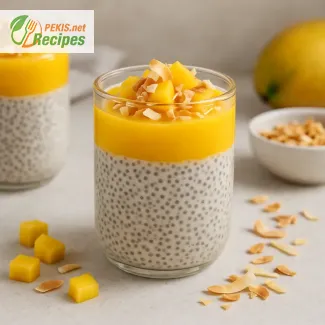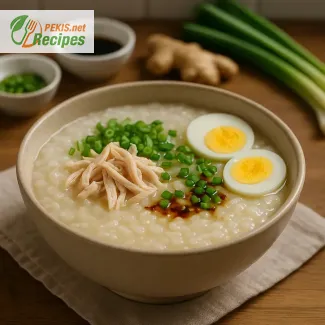
Nourishing Morning Warmth with Rice Porridge
Discover the comfort and tradition of homemade congee
Few dishes bring the same sense of warmth, simplicity, and versatility as a well-prepared rice porridge. Known in many Asian cultures as congee, this gently simmered dish is more than just a breakfast staple—it’s a centuries-old comfort food celebrated for its soothing texture and customizable flavor. Whether served plain or enriched with savory or sweet toppings, rice porridge has earned its place as a beloved dish around the world.
At its core, rice porridge is made by slowly cooking rice in water or broth until the grains break down into a creamy, velvety consistency. This gentle transformation allows it to become a digestive-friendly, easily adaptable base that pairs beautifully with everything from poached eggs, spring onions, and soy sauce, to roasted sesame seeds, ginger, or even sweetened condensed milk. Its neutral taste acts as a canvas, inviting layers of umami, spice, or sweetness depending on your mood or region.
What makes this homemade rice porridge recipe especially appealing is its simplicity. With only a handful of ingredients and minimal effort, you can prepare a hearty meal that feels both nostalgic and nourishing. From busy weekday breakfasts to calming meals during recovery, congee adapts seamlessly to any situation.
Across Asia, this dish takes on many regional variations. In China, congee may be paired with pickled vegetables or century eggs. In Thailand, jok is enriched with minced pork and ginger. In Korea, juk might be enhanced with abalone or sesame oil. Meanwhile, in the West, rice porridge is increasingly recognized as a wholesome gluten-free option that satisfies both health-conscious eaters and those craving comfort food alike.
The popularity of congee is not merely tied to tradition—it has evolved with time. Modern kitchens now embrace rice porridge as part of a balanced meal plan, enjoyed not only in cold seasons but also year-round. It's ideal for batch cooking and lends itself to countless variations. You can prepare a classic version with white rice and broth, or make it richer with bone broth, incorporate jasmine or brown rice for added texture, or even swap in plant-based ingredients for a vegan twist.
For families and caregivers, congee also provides a gentle, nourishing choice for young children or anyone recovering from illness, thanks to its soft texture and subtle taste. The slow-cooked nature of the dish makes it easy to digest, while its moisture content keeps it hydrating and satisfying. Add finely shredded chicken, a boiled egg, or a splash of sesame oil, and it becomes a balanced, protein-rich meal suitable for all ages.
What elevates this easy rice porridge recipe is the methodical approach to cooking. Achieving the right texture—a balance between creamy and slightly textured—requires time and low, steady heat. There's no rushing congee. Its preparation is almost meditative, filling the kitchen with steam and comfort. The process, while simple, encourages mindfulness in cooking and offers a rare opportunity to slow down and truly enjoy the act of making food.
Not to be overlooked is the emotional dimension of this dish. For many, rice porridge is connected to memories of home, of being cared for during sickness, of family breakfasts on cold mornings. This deep emotional imprint explains why congee continues to transcend culinary trends and remain a timeless comfort on the global table.
If you’ve never made congee at home, this recipe is the perfect starting point. It’s affordable, forgiving, and endlessly adaptable. With just rice, water or stock, and a bit of patience, you can create a warm, nourishing bowl that invites personalization with your favorite toppings. Whether you’re in the mood for a savory breakfast with scallions and soy, or something lightly sweetened with coconut milk and cinnamon, rice porridge is always ready to accommodate.
As more home cooks rediscover the beauty of minimalist meals, rice porridge is gaining new appreciation not only in its cultural contexts but also as part of a modern pantry. Its comforting texture, low cost, and adaptability make it an excellent choice for anyone seeking nutritious, homemade breakfast options that don’t require elaborate techniques or hard-to-find ingredients.
This rice porridge recipe stays true to its roots while embracing the modern kitchen. It captures the essence of slow food and brings it into everyday life—offering a blank canvas for flavor exploration, seasonal variation, and personal expression. Whether you're seeking comfort, convenience, or cultural connection, this easy homemade congee delivers on all fronts.
Step 1 – Rinse the rice
Rinse the white rice under cold running water until the water runs clear. This removes excess starch and helps achieve a smoother texture.
Step 2 – Cook the rice
In a large pot, combine the rinsed rice and water. Bring to a boil over medium-high heat.
Step 3 – Simmer gently
Once boiling, reduce the heat to low. Add the sliced ginger and stir occasionally. Simmer uncovered for about 55–60 minutes, stirring every 10 minutes to prevent sticking. The rice should break down and the mixture should reach a creamy, porridge-like consistency.
Step 4 – Season the porridge
Add salt and stir well. Taste and adjust the seasoning if needed.
Step 5 – Serve and garnish
Ladle the hot rice porridge into bowls. Garnish with chopped spring onion, shredded chicken, halved boiled egg, and drizzle with soy sauce and sesame oil if desired. Serve immediately.
Elevating the Classic Congee: Smart Twists and Healthful Upgrades
Transform your rice porridge with taste, nutrition, and precision
While traditional rice porridge is beloved for its simplicity and comfort, it offers a perfect base for creative enhancements that deepen flavor, improve texture, and boost nutritional value. From subtle shifts in cooking technique to thoughtful ingredient upgrades, this dish can be adapted to suit a variety of dietary needs and culinary preferences. Whether you’re seeking a more flavorful profile, healthier ingredients, or a richer sensory experience, congee is one of the few recipes that rewards every little change with satisfying results.
Boosting flavor through cooking liquids
One of the easiest and most impactful improvements you can make is swapping plain water with a flavorful broth. Using chicken stock, vegetable broth, or bone broth instead of water creates a more savory foundation. Bone broth adds collagen and minerals, enhancing both taste and health benefits. For a vegetarian version, opt for a slow-simmered vegetable broth infused with onions, celery, carrots, and dried mushrooms, which impart umami without animal products.
Adding texture with whole grains and rice varieties
The traditional version typically uses white rice, which delivers a smooth, mild porridge. For more complexity, try blending white jasmine rice with a portion of brown rice, black rice, or even quinoa. This not only boosts the fiber content but also introduces a slight chewiness that contrasts well with the creamy base. Using short-grain rice gives a starchier, thicker texture, while long-grain rice like basmati stays slightly firmer, offering a lighter mouthfeel.
The power of aromatics and spices
Aromatic ingredients can transform the simplicity of rice porridge into a richly layered dish. Sautéing minced garlic, ginger, or shallots in a bit of sesame oil before adding the rice to the pot releases flavor compounds that deepen the profile. Adding star anise, cloves, or white pepper while simmering brings subtle warmth and a mild spice that elevates the dish without overpowering it. These small inclusions add character without complexity in preparation.
Building umami with toppings and condiments
Savory congee shines when topped with ingredients that bring contrast and umami. Classic toppings like shredded chicken, soft-boiled eggs, and spring onions work well, but you can go further with shiitake mushrooms, nori, fermented tofu, or crispy shallots. Drizzles of dark soy sauce, chili oil, or black vinegar add depth and tang. Adding a spoonful of miso paste toward the end of cooking brings natural glutamates and a subtle fermented richness that enhances the base.
Making it sweeter without added sugar
For a sweet version of rice porridge, use coconut milk, almond milk, or cashew milk in place of some water. Add cinnamon, cardamom, or vanilla for warmth. Sweeten naturally with mashed banana, grated apple, or dried fruits like dates or raisins. A handful of toasted nuts, chia seeds, or a swirl of nut butter can offer both flavor and nutrition. These versions make ideal breakfasts or light desserts while avoiding refined sugars.
Avoiding common mistakes
A frequent error in congee preparation is undercooking the rice or using the wrong rice-to-liquid ratio. The dish should be creamy, not soupy or grainy. Stirring frequently helps break down the rice and prevents sticking at the bottom of the pot. Cooking at too high a temperature can cause scorching, which results in bitterness and discoloration. Patience and low heat are essential for perfect texture.
Another common mistake is under-seasoning. While traditional congee is mild, even small amounts of salt or soy sauce early in the cooking process can help build foundational flavor. Waiting until the end may result in an unbalanced taste.
Making it healthier
For a more nutrient-dense version, replace white rice entirely or partially with whole grains like millet, amaranth, or rolled oats. These grains contribute more fiber, protein, and micronutrients. You can also blend grated zucchini, carrot, or pumpkin puree into the porridge without altering flavor too much, while adding antioxidants and vitamins.
To reduce sodium, use low-sodium broth and limit the amount of soy sauce. Instead, rely on herbs like fresh coriander, basil, or lemon zest for freshness and brightness. If using protein, opt for steamed tofu, poached fish, or lean poultry to keep the fat content balanced.
Why homemade is always better
Homemade congee gives you complete control over ingredients, consistency, and seasoning, unlike many store-bought or pre-made versions that are often high in sodium, low in fiber, and lacking in real flavor. Preparing it at home ensures freshness, lets you adapt it to specific dietary needs, and makes room for cultural and personal touches—like using heirloom rice, home-fermented toppings, or seasonal herbs.
Moreover, cooking congee from scratch fosters a connection to tradition and simplicity. It transforms a few basic pantry staples into something deeply satisfying, comforting, and versatile. Whether you serve it to comfort a loved one or to nourish your own body, every bowl reflects care and intention.
Creative serving ideas
Try serving congee in individual clay bowls to retain warmth and absorb moisture. Offer a small topping bar with chopped herbs, pickled vegetables, crushed peanuts, boiled soybeans, or even kimchi for a Korean twist. These optional garnishes allow each person to customize their bowl and enjoy the porridge in new ways with every serving.
With just a few intentional changes, this age-old dish can transform into a personalized, balanced, and memorable meal that meets both traditional and modern culinary expectations.
Allergens present in the recipe
- Soy (from soy sauce)
- Eggs (optional topping)
- Gluten: If using regular soy sauce, it contains gluten.
Suggestions to eliminate allergens and gluten
- Use gluten-free soy sauce (tamari) to make it gluten-free.
- Omit the egg or use a plant-based alternative.
- Use gluten-free vegetable broth instead of water for extra flavor (if desired).
Vitamins and minerals per serving (approximate)
- Vitamin B1 (Thiamine): 0.25 mg – supports energy metabolism and nerve function
- Vitamin B6: 0.4 mg – promotes brain health and immune function
- Vitamin B12: 0.6 µg – essential for red blood cell formation (from egg or chicken)
- Vitamin D: 0.8 µg – supports calcium absorption and bone health (from egg)
- Iron: 1.2 mg – supports oxygen transport in the blood
- Magnesium: 35 mg – important for muscle and nerve function
- Zinc: 1.1 mg – supports immune system and wound healing
- Phosphorus: 140 mg – strengthens bones and teeth
- Potassium: 220 mg – helps regulate fluid balance and blood pressure
Antioxidants per serving (approximate)
- Selenium: 12 µg – helps protect cells from oxidative stress (from egg/chicken)
- Gingerol: 5 mg – anti-inflammatory compound from ginger
- Vitamin E: 0.9 mg – protects cells from damage
- Polyphenols: 30 mg – plant-based antioxidants supporting heart health (from sesame oil and soy sauce)
